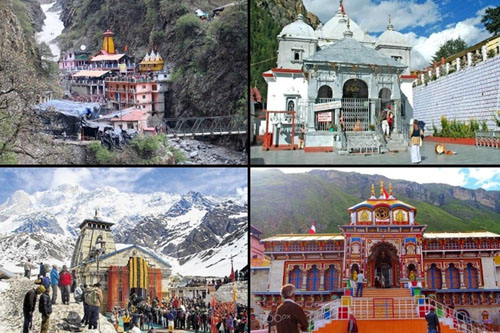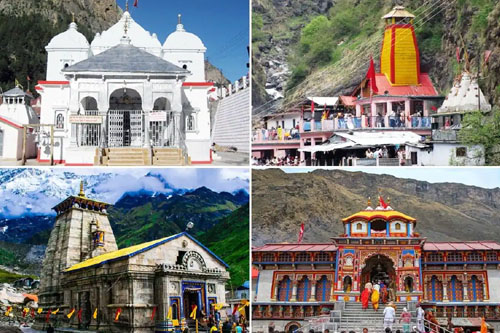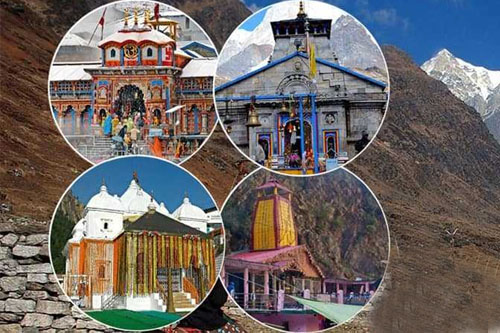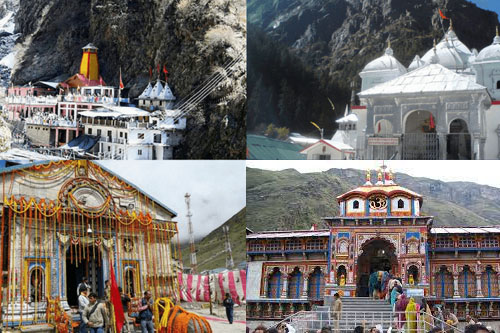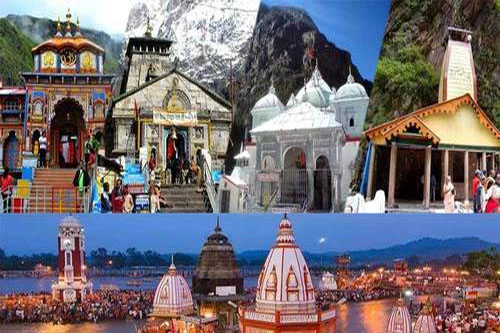Nestled among the serene heights of the great Himalayas are four pilgrim-destinations namely Yamunotri, Gangotri, Kedarnath and Badrinath, known collectively as Char Dham. These pilgrimage centres draw the maximum numbers of pilgrims each year, thus becoming the most important hubs of religious travel in whole of Northern India. Traditionally, the pilgimage begins from West and ends in the East. Thus, the Char Dham Yatra commences from Yamunotri, then proceeding to Gangotri and finally to Kedarnath and Badrinath. In accordance with the Hindu conventions, thousands of devotees take up this pious pilgrimage in the hope to experience bliss and successfully purge their souls of all worldly demons.
Each of these four sites is devoted to a specific deity. Yamunotri is dedicated to the Goddess Yamuna who goes along the pilgrims to the high altitudes of the picturesque Rawai Valley. Yamunotri stands high up in the deep left on the western face of the Bunderpunch Peak. The most sacred area of Yamunotri is a dark rock from where the hot springs emerge, called the Divya Shila. Here at the origin of the Yamuna pilgrims offer their first prayer. It is believed that a bath in the sacred river Yamuna protects the devotees from untimely death that could hinder one’s chances of achieving eternal emancipation.
Gangotri is dedicated to the Goddess Ganga. The shrine overlooks the River Bhagirathi, another name of River Ganga - the name having been derived from the myth of the ancient King Bhagirath’s penance that succeeded in bringing her upon the earth from the heavens. It is said that King Bhagirath meditated here in Gangotri on a rock called Bhagirath Shila, near the temple.
Popular Packages
Eco Dehradun Yamunotri Gangotri Kedarnath - Badrinath - Haridwar
Duration : 10 Days & 10 Nights
Haridwar Yamunotri Gangotri Kedarnath Badrinath-haridwar
Duration : 10 Days & 10 Nights
Haridwar Yamunotri Gangotri Kedarnath - Badrinath-haridwar
Duration : 10 Days & 10 Nights
Rishikesh Yamunotri Gangotri Kedarnath Badrinath - Rishikesh
Duration : 10 Days & 10 Nights
Rishikesh Yamunotri Gangotri Kedarnath Badrinath-rishikesh
Duration : 10 Days & 10 Nights
Rishikesh Yamunotri Gangotri Kedarnath Badrinath-rishikesh
Duration : 10 Days & 10 Nights

